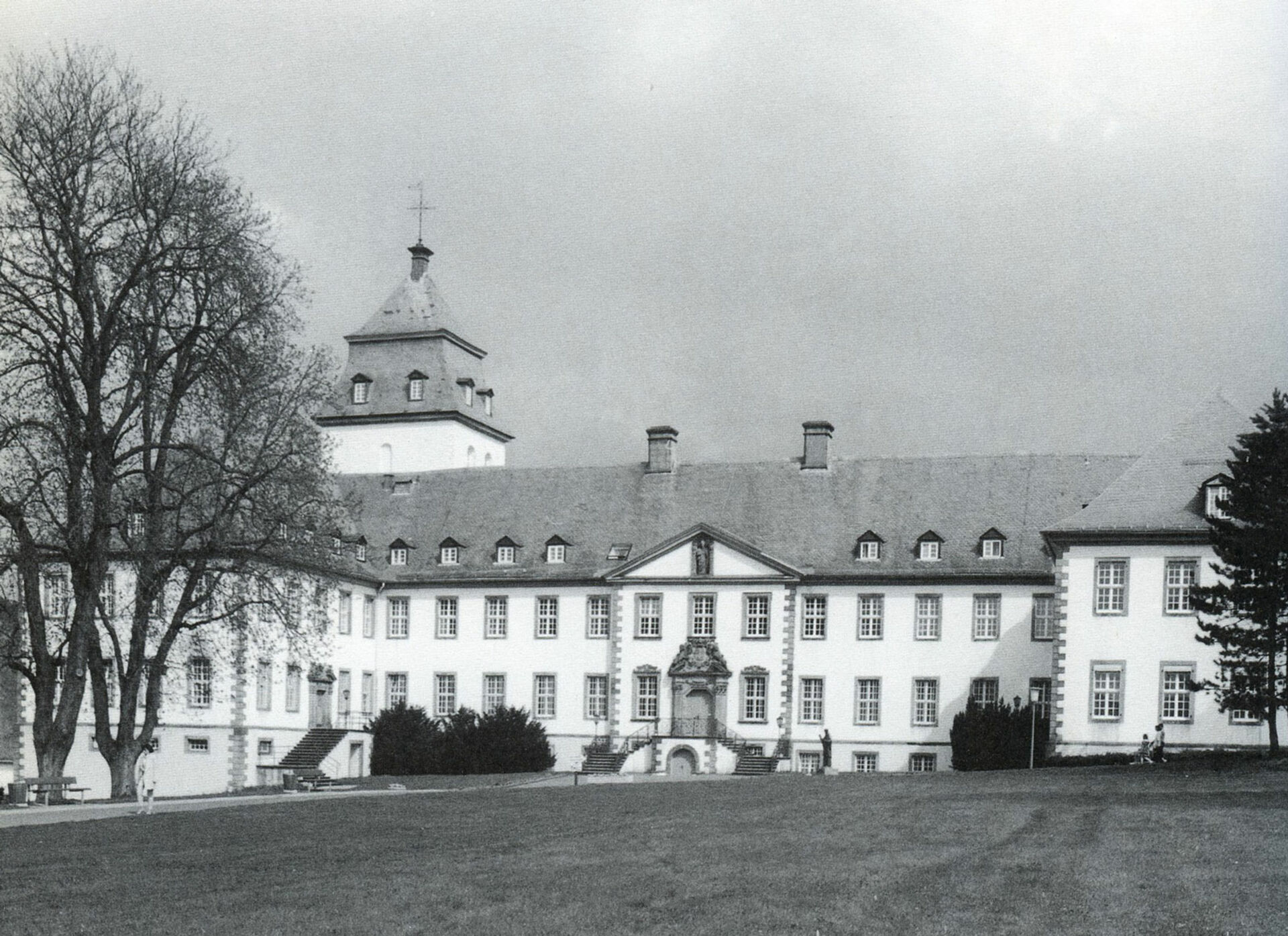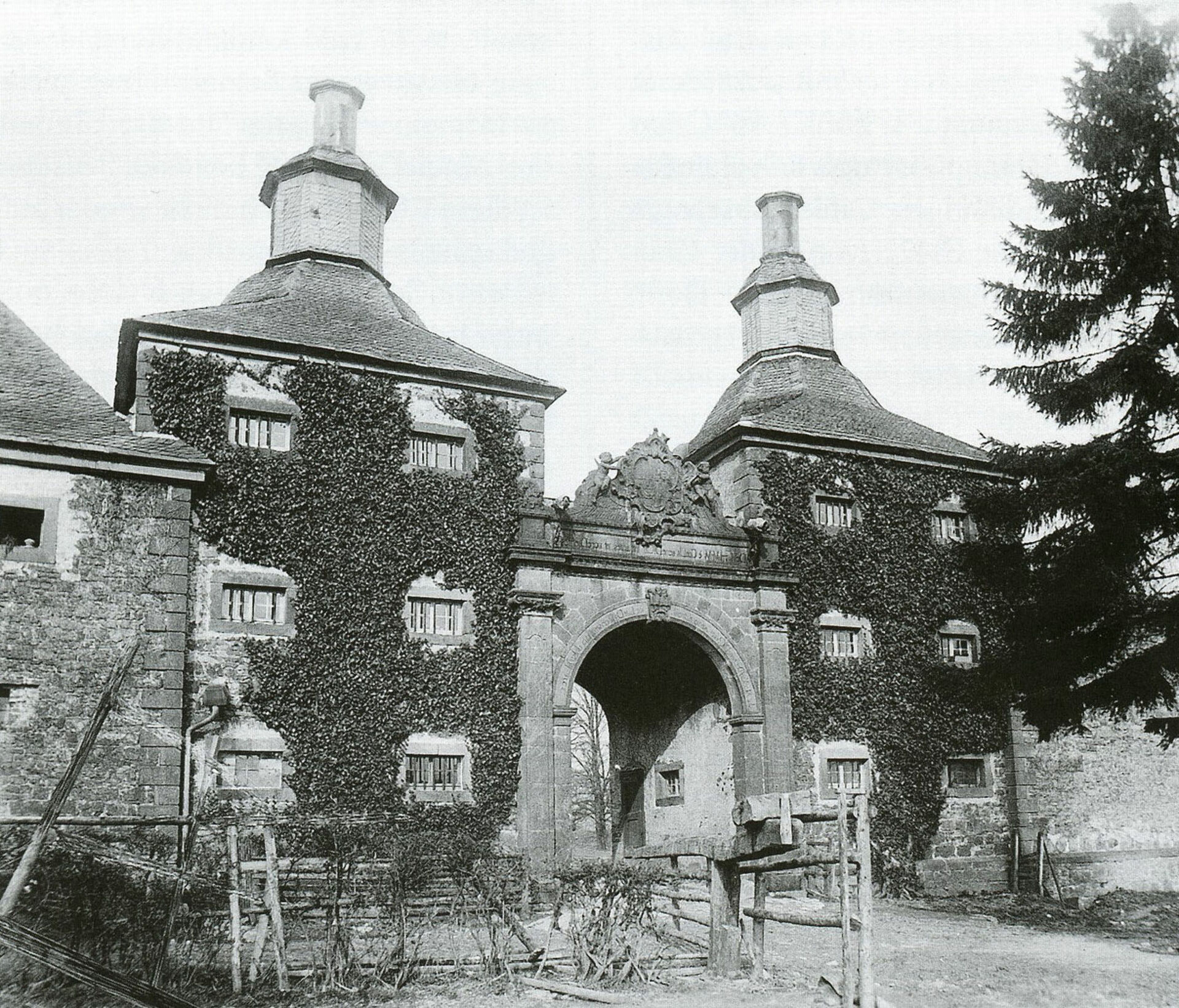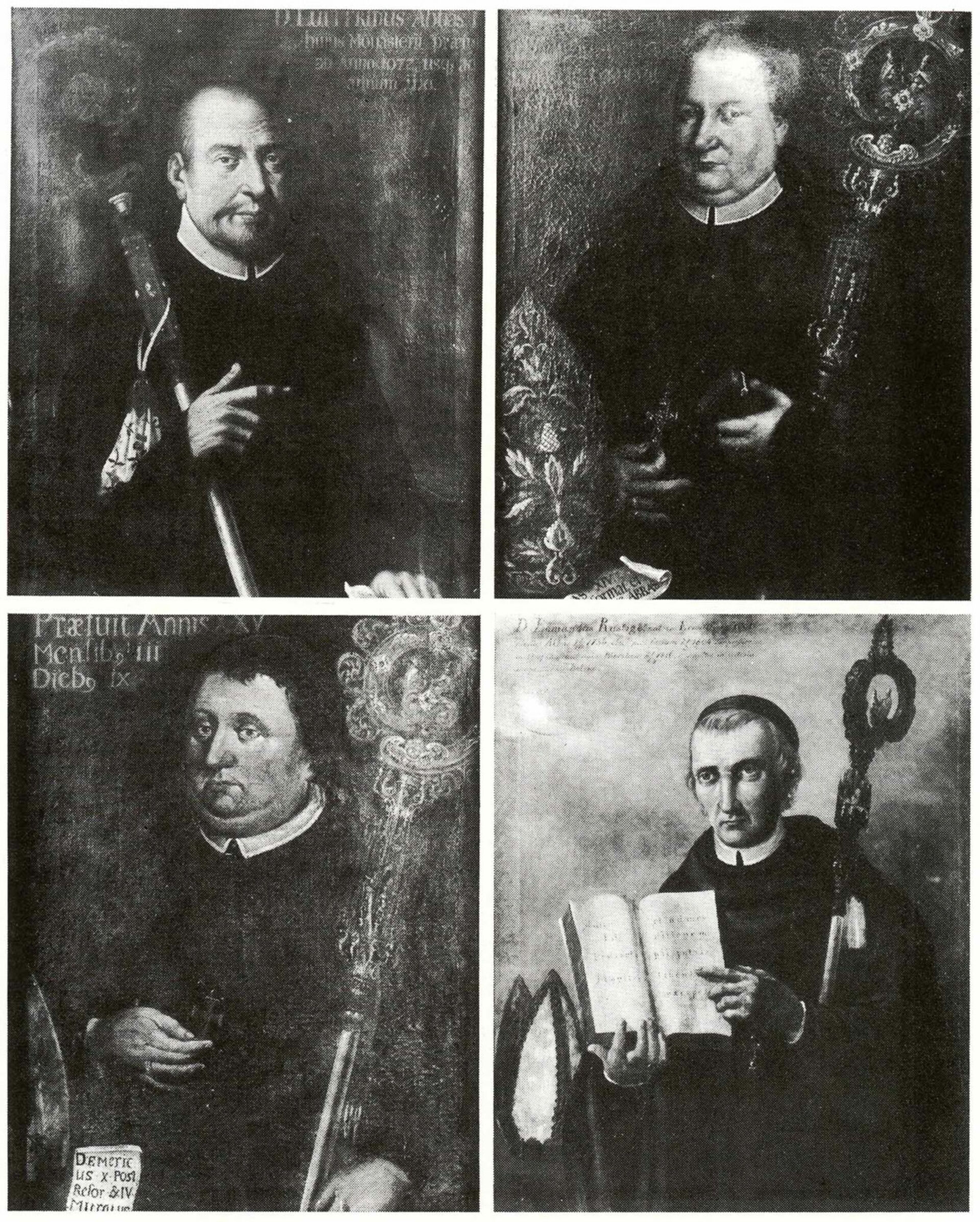Monastery Grafschaft
and the legendary Wilzenberg
Information point:
- Viewpoint in the park on the Zehnhofweg: View of Wilzenberg and monastery Grafschaft
Wilzenberg
The traces of settlement in the Schmallenberg Sauerland Schmallenberg go back as far as the pre-Christian millennium. Wilzenberg weapons finds and the remains of a hill fort bear witness to traces of settlement dating back over 2000 years. A pilgrimage chapel was built here in 1633 and the 17-metre-high iron Wilzenberg tower in 1891.
Monastery Grafschaft
At the foot of the Wilzenberg, Archbishop Anno II of Cologne founded the Benedictine abbey St. Alexander in 1072, usually referred to as Kloster Graftschaft. The monastery belonged to the Cluniac reform monasteries and was an episcopal monastery: it remained politically dependent on the archbishop and thus stabilized and secured the rule of the archbishops of Cologne in the Wilzenberg region. It prospered in the 12th century and was home to up to 80 brothers. Some artistic and remarkable manuscripts from this period have been preserved. In the 13th and 14th centuries, a secular lifestyle increased among the monks and abbots and the monastery farms were no longer managed by the monks themselves, but were leased out. In 1304, the archbishop limited the number of monks to 24 in order to ensure the economic survival of the monastery.
The monastery played an important role in the founding of the town of Schmallenberg, as it contributed to the costs of building the town wall. It subsequently maintained a feudal chamber and tithe barn in the town (today's Zehnthofweg). As the town grew, conflicts with the monastery arose time and again: the right to fill the town's parish post was the main bone of contention, as was the right to use the surrounding forests and the Weide, hunting and fishing rights. The problem became more acute after 1507, when the monastery no longer employed secular clergy in the town, but increasingly religious brothers.
Upturn in the early modern period
In 1507, the monastery only had seven monks; the archbishop therefore initiated a reform in 1508: Monastic life and scientific study were to be promoted. The monks now increasingly came from middle-class and peasant families, and no longer exclusively from the nobility. Around 1600, there were around 10 monks. As the monastery's agricultural income became scarce, the monks began to devote themselves to ironmaking at the end of the 16th century: they leased iron hammers to Sorpe and Lenne and supervised and kept the accounts themselves. This work generated considerable income, especially as the necessary raw material, coal, was available in their own forests. A renewed reform of the monastery administration from 1612 (by Abbot Gabel Schaffen) - financial reorganization, structuring of the daily routine, expansion of the library - led to an upswing, which was reflected in new building activity: new farm buildings, a hospital and a chapel were erected in 1626. In addition, the abbots were granted the right to wear a mitre by Rome.
With the town Schmallenberg In 1673, a dispute broke out between the abbot of the monastery and the townspeople over the occupation of the parish and the pastorate outside the town, in which the monastery was victorious in 1683 (it was granted unrestricted patronage rights). The monastery chronicle, which has been kept since the end of the 17th century, shows that the monks held various offices, including teaching in village schools.
The new monastery, which still exists today, was built between 1729 and 1742, and the church was rebuilt between 1738 and 1743. The farm buildings were erected in 1765 and 1787. The newly built three-aisled hall church was considered the most beautiful church in the Sauerland region of Electoral Cologne. To the south of the church was a cloister, to the west of the church was the abbot's residence (with an archive attached and a brewery and distillery in the cellar). In the 18th century, the monastery had between 30 and 50 monks.
Secularization
Heavily damaged and plundered during the Seven Years' War (1756-1763), as the Bishop of Cologne supported France in its fight against Hessen and Prussia, the monastery was secularized in 1804: The monks had to leave it. First in Hessian, then Prussian state ownership, it was bought by the barons of Fürstenberg in 1827, who still own it today (without the surrounding forests). The baroque church was demolished in 1832; the agricultural estates continued to be used.
In 1948, the Borromean nuns, who had fled from Silesia, leased the monastery. They still run it today, and the complex also houses the specialist hospital Kloster GrafschaftThe complex also houses a specialist lung clinic, which developed from a convalescent home opened in 1950 for miners from Ruhrgebiet.
The Alte Mühle
Around three kilometers from the monastery Grafschaft is located on the Lenne outside the city limits is a mill belonging to the monastery that was first mentioned in the 11th century (Nieder- or Klostermühle; upstream was the Obere- or Stadtmühle). It supplied the surrounding residents with flour and oil. After a flood in 1961 filled in the mill ditch, the mill was finally closed in 1961. In 1974, the painter and artist Hermann FALKE acquired the Alte Mühle, renovated the building, some of which dated back to the 15th century, and set up a workshop and gallery. Today, the "Freundeskreis Kunsthaus Alte Mühle" organizes exhibitions, vernissages and workshops in the listed building.




